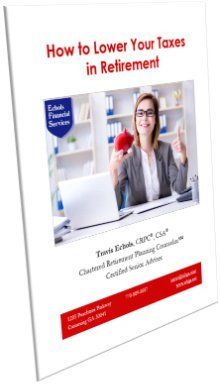How to Navigate the Retirement Danger Zone

Originally written on 2/28/2017.
When you are white-water rafting, there are certain places on the river that can be dangerous to your health. You need to carefully navigate the rapids to avoid injury.
So it is in retirement planning. There are places where making the wrong move can be dangerous to your financial health. The white-water rapids in retirement are the ten years preceding retirement and the ten years at the beginning of retirement.
Sign up to receive my free monthly email articles on retirement planning and investments
.
Executive Summary
The danger zone in retirement is the 10 years before, and the 10 years after, retirement begins. This perilous 20-year period should be prepared for long in advance and carefully navigated when that time comes. Due to portfolio size effect and sequence-of-returns risk, investors need to carefully manage stock market risk in the danger zone while still giving themselves opportunity for growth over a potentially long retirement period.
The research suggests that it generally makes sense for a person to invest heavily in stocks when young and begin to significantly decrease stock exposure as retirement age approaches. And once in retirement, it is best to use a flat-percentage stock allocation throughout retirement. A further enhancement, using this approach, is to vary stock exposure by 10 to 20% based on market valuations (CAPE and/or PB), before and during retirement.
Now let's look at the problem in more detail and a two-part solution
The reason this danger zone, sometimes called the red zone , exists is two-fold: portfolio size effect and sequence-of-returns risk.
- Portfolio size effect is the greater effect your portfolio size has on your retirement security as compared to your future savings when your portfolio becomes larger and your future savings potential becomes smaller due to fewer years to work. The returns earned on a large portfolio dwarfs your future contributions. For example, let's say you have a a 10% annual gain on $1 million. That gain is $100,000! This gain has a much greater effect on your wealth than your $18,000 savings that year. This portfolio size effect can work against you as well, since your $18,000/year contributions can be dwarfed by losses of $100,000 or more.
- Sequence-of-returns risk occurs if you are taking distributions from your portfolio. If you never take money from your portfolio, the order or sequence of returns that you earn doesn’t matter. You’ll have the same at the end, regardless of the sequence. But if you are taking distributions, negative investment returns in the first decade of withdrawals can have a much more harmful effect as far as your money lasting your lifetime than negative returns at the end of the withdrawal period. Some have called this problem reverse dollar cost averaging. Since you are withdrawing a fixed dollar amount each month, you are systematically selling more shares when prices are low and fewer shares when prices are high. This can be devastating if it lasts for several years in the early years of retirement. Why it does not matter as much for the negative returns to come later in retirement is that you have already racked up higher returns earlier. It is having to sell your seed corn that limits your harvest for years to come; whereas losing a big harvest after your seed corn has multiplied is not nearly as detrimental to your money lasting your entire lifetime.
Carefully manage your portfolio risk in the danger zone
The investor's tension during this danger zone is apparent. The more you have in stocks, generally the better able you will be to outpace inflation and thus enjoy a better lifestyle. See Why Simple Savers Lose in the End. But at the point you retire, you are the most vulnerable to sequence-of-returns risk. So you want stock exposure for growth to cover a long retirement, but you have to protect yourself in case you retire at the start of a long bear market in stocks.
Note: When I say stocks, I am referring to a diversified collection of stocks that minimizes company risk. This can be accomplished by owning many individual stocks, mutual funds or Exchange Traded Funds (ETFs). However, market risk is still present.
If the danger zone in retirement is the ten years preceding retirement and the ten years at the beginning of retirement, some studies have recommended a V-shaped equity (i.e., stock) allocation over time. Ten years before retirement, you would begin to lower your equity exposure. Then during retirement, you draw from cash and bonds, allowing your equity percentage to rise. Since the potential negative impact of a market crash subsides after the first ten years, a greater stock percentage later in retirement would make up for any previous bear market--and a market downturn later would not be devastating since you have already lived past the danger zone.This may work mathematically, but I find clients not usually amenable to taking on more and more volatility in their golden years. However, it does suggest that a continually decreasing stock percentage with age is not the best approach in retirement. And thus a flat stock allocation is usually the best solution.
This flat allocation in retirement is also recommended by Russell Research and Josh Cohen, CFA. Mr. Cohen writes in his AAII July 2010 article, Allocation in Retirement: A Flat Glide Path Always Make Sense, "Retirees face their maximum risk exposure the day they retire...and they are quite vulnerable to sequential risk. If the market does well in the early years of retirement, when retirees are starting to make withdrawals, then their accounts should maintain reasonable balances. As their time horizons shorten, the likelihood that their accounts will run out of money decreases and therefore there is no need to decrease risk. Conversely, if the market does poorly in the early years of retirement, retirees will experience a rapidly declining account balance. Decreasing stock allocations later locks in their losses--and smaller allocations can't do enough to help retirees recover their savings."
All of this would suggest that it generally makes sense for a person to invest heavily in stocks when young and begin to decrease stock exposure as retirement age approaches. This is called the glide path to retirement. And once in retirement, it is best to rebalance to a flat percentage stock allocation throughout retirement. This is called the glide path in retirement.
Dynamically adjust your stock exposure based on market valuation
This decreasing glide path to a flat average asset allocation in retirement makes alot of sense. But historical data shows that the percentage of stocks a retiree needs differs based on when retirement starts relative to market prices. If we can find a correlation and use that to forecast market returns going forward, we can enhance the average glide path.
Fundamental analysis of individual stocks has long been recognized and popularized by men like Benjamin Graham and Warren Buffet. The question is can some aggregate valuation be applied to stock markets.
In 1934, Graham & Dodd recommended using an
average of earnings for the last 7 to 10 years to calculate the Price to Earnings (PE) of stocks. Following this advice, in 1998, Campbell and Shiller developed a cyclically
adjusted price-to-earnings ratio (CAPE).
This valuation measurement calculates the current market price in relation to the average inflation-adjusted profits of the previous 10 years. This CAPE (or Shiller PE10) can be used to assess
whether the value of a market is high or low compared to its profit level adjusted for an economic cycle.
The May 2008 issue of The Kitces Report shows the strong inverse relationship between the Shiller PE10 and subsequent stock 15-year return for a 60% stocks/40% bonds portfolio.
Graph 1. PE10 versus subsequent 15-year return of balanced portfolio
Star Capital's 2016 report, Predicting Stock Market Returns Using the Shiller CAPE
,
acknowledges some criticisms but confirms
the CAPE's predictive value. Along with price-to-book (PB) ratios, they
use the Shiller CAPE to predict long term returns of various stock asset
classes, foreign and domestic.
Graph 2. CAPE in the S&P 500 since 1881
(January 2018 addendum to this article: For a defense of the CAPE in projecting long-term returns, reference Research Affiliates' article entitled CAPE Fear: Why the Naysayers are Wrong
, written by Rob Arnott, Vitali Kalesnik, and Jim Masturzo.)
It turns out that if you employ a dynamic allocation based on valuations that can forecast stocks’ general performance over the next long period, you can underweight your stock allocation to mitigate sequence-of-returns risk. And if you overweight stocks when markets are favorably priced, studies show this has even a greater impact on increasing your safe withdrawal rate. See my safe withdrawal rate article, Three Steps to Safely Maximize Your Portfolio Income .
Table 1
below is an example of a full dynamic rebalancing asset allocation
guide, representing the percentage of the portfolio to be in
stocks.

Table 1. Full dynamic rebalancing asset allocation guide
Note: Age range of 50-60 years can be altered if retirement is earler or later than 60. In the case of later retirement, it still may be safer to use age 60 as the end of the decreasing glide path, since early retirement in one’s 60s is not uncommon due to unexpected events such as layoffs, sickness, or family issues.
*gp = glide path of decreasing stocks over age range
Table 1 is graphically depicted below.
Graph 3. Stock Allocation Under Various Market Conditions
This strategy is not an attempt at market timing, as it cannot predict tops and bottoms. Rather, it is a way of assessing the risk/return potential of stocks over the subsequent decade or more, and rebalancing the portfolio accordingly by 10 to 20%. This is a guideline. Of course, your personal goals and risk tolerance should also guide your decision.
In summary, during retirement (or age 60, whichever is earlier), you want to use a flat percentage that is fully dynamically adjusted to decrease sequence-of-returns risk and increase the safe withdrawal rate. This flat asset allocation approach during retirement, with full dynamic rebalancing gives you the opportunity to make up for below-average performance and lock in above-average performance, thereby optimizing portfolio returns and withdrawal income.
We all need help in areas outside of our field of expertise. I would love to help you with your retirement planning. For a complimentary review of your retirement plan, contact me .


Travis Echols , CRPC®, CSA
Receive free Social Security Guide by email




Investment Advisory Services offered through JT Stratford, LLC. JT Stratford, LLC and Echols Financial Services, LLC are separate entities.











